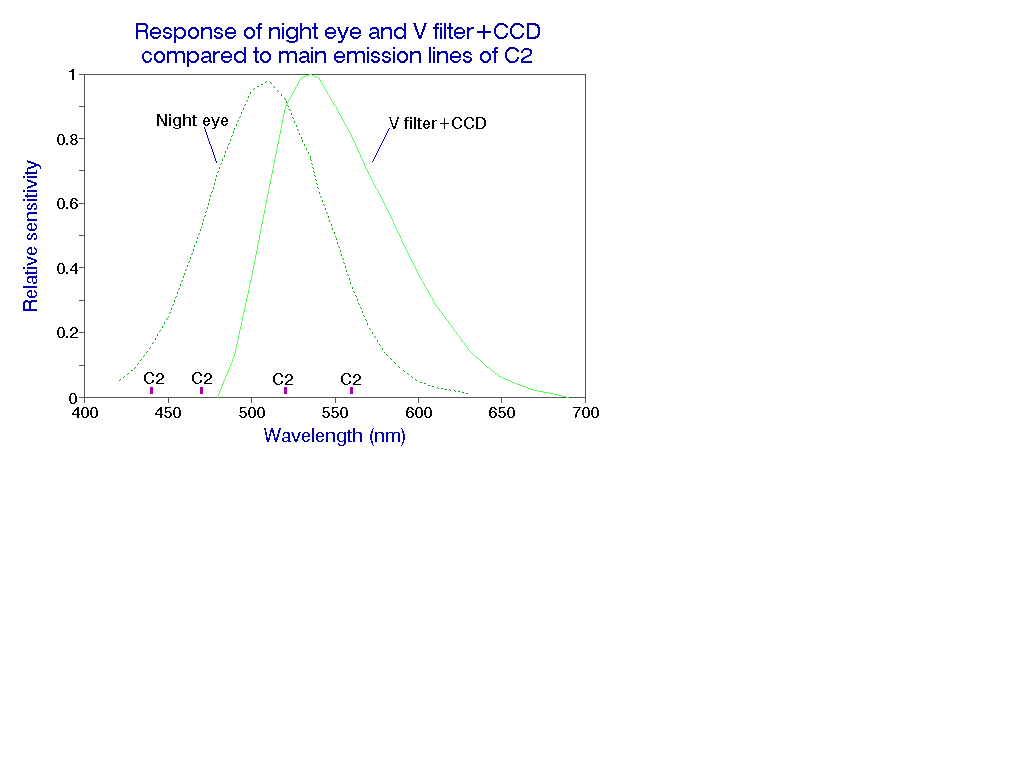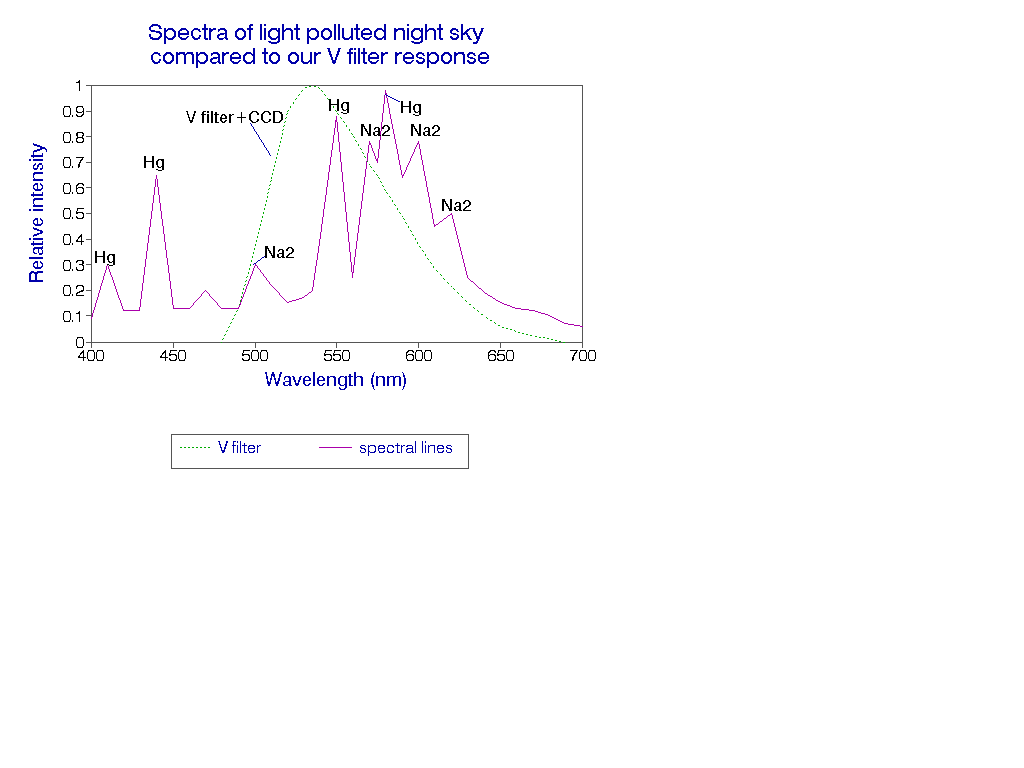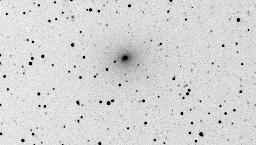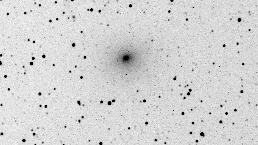|
Further remarks about the computer programs that we currently use for CCD photometry of comets.
ST6OPS is supplied with ST-6 CCD camera by Santa Barbara Instrument Group and is used for the image
acquisition and dark subtraction. The program also enable conversion to FITS file format (Wells et al., 1981).
We use 16-bit conversion. In order to transport frames to PCVISTA, the generated files must be divided by 2 and
added the constant of 16384.
PCVISTA is an image processing and analysis package, developed at University of California (Richmond & Treffers 1989).
We used the following procedures:
MN - computes mean of the image.
DIV - divides object image with flat image to perform flat-field correction.
CLIP - replaces all pixels in a specified box. It is used to remove
stars inside the comet coma by replacing star counts with the nearby
sky value.
CURSOR - displays data values at cursor position on the image.
PHOT - performs aperture photometry with specified aperture radii.
The following programs were written by the authors and are available upon request.
XST6 reads the data from the FITS image header and calculates the air mass, X, of the object.
SKYSUB calculates the linear best-fit sky value and subtracts it from the frame; it is used when the comet is near
the horizon and the sky gradient differs significantly over the frame.
DAOPHOT II for PCs
is a software package for CCD photometry, written by Peter Stetson from
Dominion Astrophysical Observatory. It has been recently transfered
from main-frame and workstation environments to personal computers
running DOS.
FitsPro is an image processing program for MS Windows 3.1; it incorporates various image processing and data reduction options
(including aperture photometry) and works with FITS-format files. The program is avilable on-line.
|



